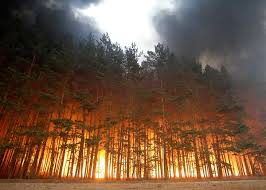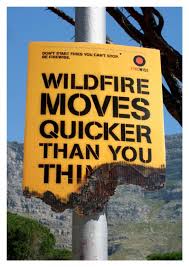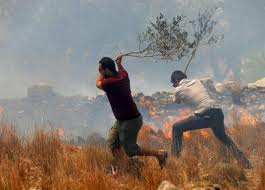|
|
| |
|
|
 When lighting a firing you automatically responsible for anything this fire couses.
If you want to get rid of this responsibility you need to put out the fire after you are done.
Before we begin to extinguish the flames, take notice of following:
Lighting a fire is done with a purpose, a fire, especially the amount of wood, you need to match to the goal.
It can and should never happen that you have to extinguish a big pile of burning wood.
When lighting a firing you automatically responsible for anything this fire couses.
If you want to get rid of this responsibility you need to put out the fire after you are done.
Before we begin to extinguish the flames, take notice of following:
Lighting a fire is done with a purpose, a fire, especially the amount of wood, you need to match to the goal.
It can and should never happen that you have to extinguish a big pile of burning wood. |
| |
|
Extinguish fire
|
 As we know, a fire needs; heat, fuel and oxygen to burn.
When we take away one of these elements, a fire is bound to go "out".
Despite responsible behavior, during a scouts-meeting, subsequently a fireplace will contain:
* Minimum, fuel.
* A lot of heat.
* Oxygen.
To extinguish the firewe need to tackle, the mentioned points, one at a time.
Sprinkle water over the fuel present and remove the larger pieces from the ashes.
Extinguish the separate pieces with excess water and set aside.
Get as much heat out of the ashes by quenching with excess water.
Do the same for the immediate vicinity of your fireplace.
This is done right if you can rub your hands through the ashes.
Cover the wet ashes with sand "without additional fuel" and beat on it. The compact sand will prevent oxygen reaching the remaining
heat source.
Check the, separated, fuel residue on heat, they may combust spontaneously. Spread the remains throughout the immediate vicinity.
As we know, a fire needs; heat, fuel and oxygen to burn.
When we take away one of these elements, a fire is bound to go "out".
Despite responsible behavior, during a scouts-meeting, subsequently a fireplace will contain:
* Minimum, fuel.
* A lot of heat.
* Oxygen.
To extinguish the firewe need to tackle, the mentioned points, one at a time.
Sprinkle water over the fuel present and remove the larger pieces from the ashes.
Extinguish the separate pieces with excess water and set aside.
Get as much heat out of the ashes by quenching with excess water.
Do the same for the immediate vicinity of your fireplace.
This is done right if you can rub your hands through the ashes.
Cover the wet ashes with sand "without additional fuel" and beat on it. The compact sand will prevent oxygen reaching the remaining
heat source.
Check the, separated, fuel residue on heat, they may combust spontaneously. Spread the remains throughout the immediate vicinity. |
| |
|
Spontaneous combustion
|
 As already mentioned several times befor, fire needs fuel, heat and oxygen. What if there are materials wich generate enough heat by themselves
to ignite.
Natural materials wich die down get into a rotting-proces wich generates heat on it's own.
The heat can be enough, especially in hot weather, for several natural fuels to ignite. Well known example is the dunghill.
Charred remains wich are piled up are also susceptible for this phenomenon. For this reason cover ashes and charred wood with sand.
As already mentioned several times befor, fire needs fuel, heat and oxygen. What if there are materials wich generate enough heat by themselves
to ignite.
Natural materials wich die down get into a rotting-proces wich generates heat on it's own.
The heat can be enough, especially in hot weather, for several natural fuels to ignite. Well known example is the dunghill.
Charred remains wich are piled up are also susceptible for this phenomenon. For this reason cover ashes and charred wood with sand. |
|
|
|
|
| |